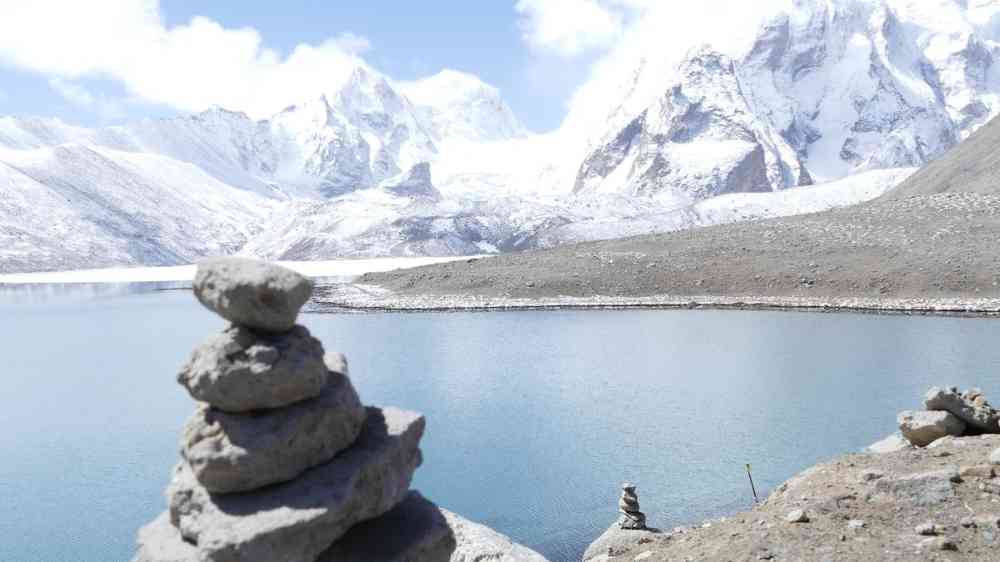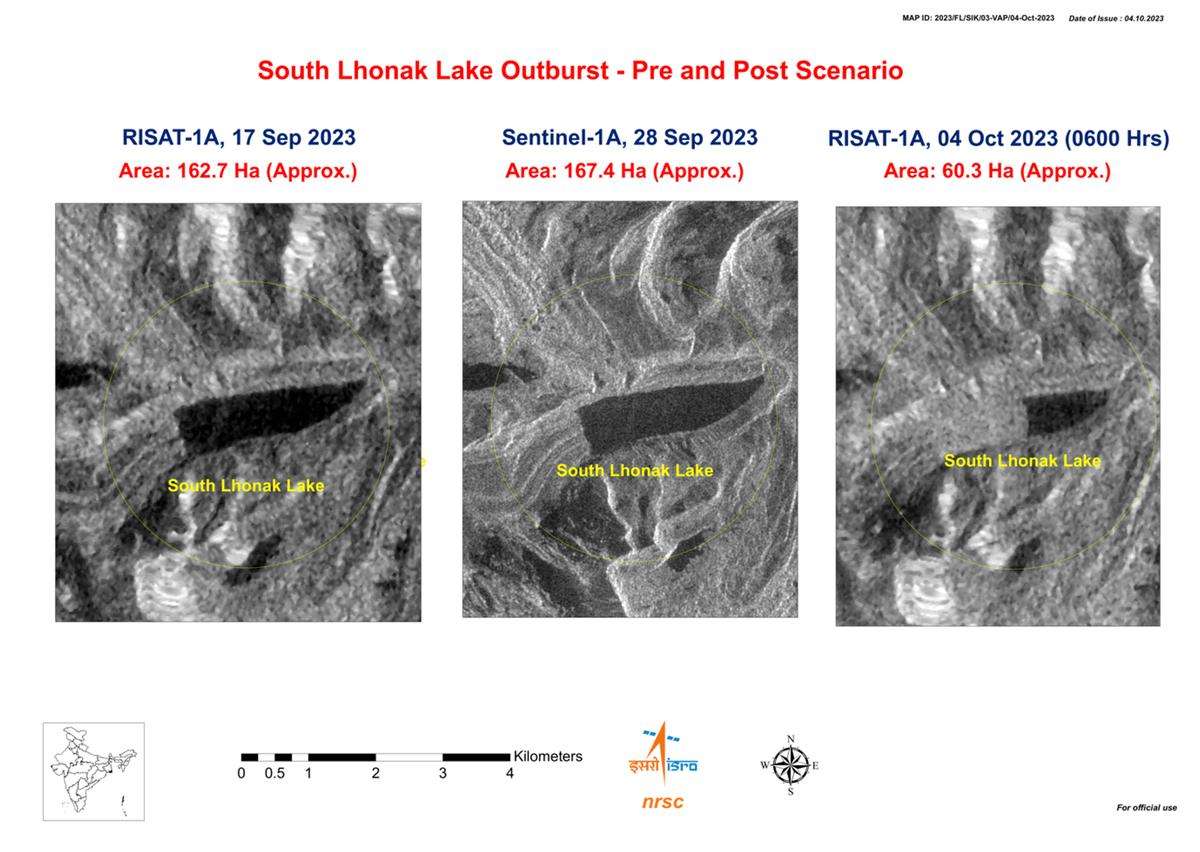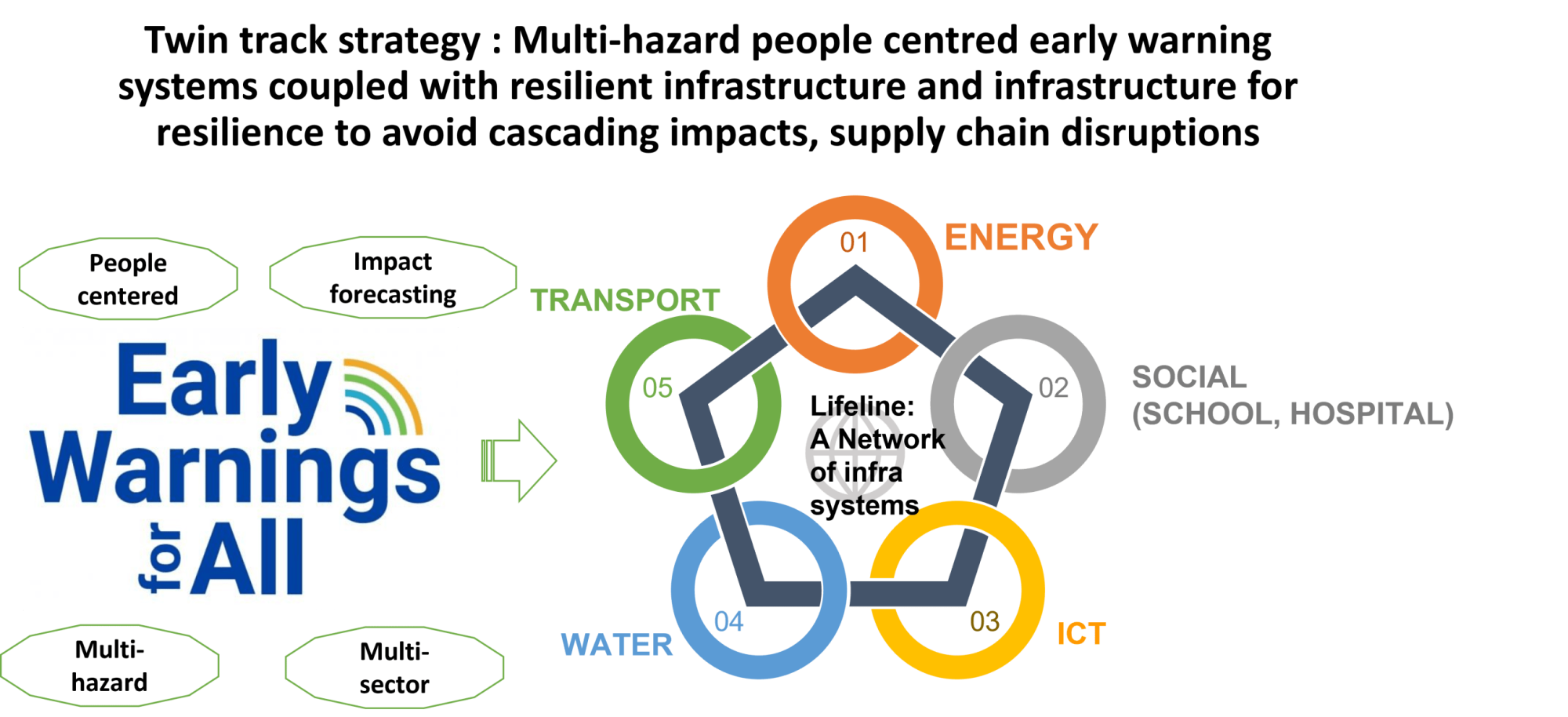Climate catastrophe in Sikkim Himalaya: Twin track resilience strategy

On 4 October 2023, a cloudburst over Lhonak Lake in North Sikkim triggered a glacial lake outburst flood (GLOF) in the Teesta river basin, which claimed over 30 lives, destroyed the 1,200 MW Urja Hydroelectric Chungthang dam and caused widespread damage downstream.
A dangerous outcome of climate change-induced glacier retreat, this catastrophe exemplifies how disaster risks compound and cascade in the fragile mountainous context of the Himalayas. GLOFs pose a serious threat to mountainous communities across Bhutan, India, Nepal, and Pakistan; from the Himalayas to the Caucasus, Pamir, Hindu Kush-Karakoram and Tien Shan Mountain ranges.
Understanding GLOF, cloudbursts and their interactions
GLOF is often caused by a sudden breach of glacial lake dams. The Teesta basin in Sikkim Himalaya hosts numerous glacial lakes in the high altitude glacierized region, including one of the largest and the fastest growing, the South Lhonak Lake. While these lakes are mainly located in remote and uninhabited mountain valleys, far-reaching GLOFs may claim lives and damage assets up to tens of kilometers downstream, as was evident from the recent Sikkim glacial outburst. Rising temperatures intensify glacial melt, causing these lakes to grow larger and more unstable and the downstream communities more vulnerable.
The principal understanding of the cloudburst is associated with a sudden heavy deluge of precipitation in much smaller intervals over a very small area. In hilly regions, the local topology, wind systems and temperature gradients between the lower and upper atmosphere facilitate cloudburst occurrence. Such events often trigger landslides and flash floods, and GLOF causes extensive destruction downstream. Radar satellite images released by the Indian Space Research Organization (ISRO) observed that when the lake burst, approximately 105 hectare of area drained out, causing the flash floods downstream. While cloudburst triggering the GLOF is a complex phenomenon, IPCC AR6 Report forewarns about the amplification of such complex, compounding and cascading risk in high altitude fragile mountainous regions.

Source: Department of Space, India (The boundaries and names shown and the designations used on this map do not imply official endorsement or acceptance by the United Nations)
Cascading disasters: elements of uncertainties and unpredictability
More than ten years ago, we saw the triple disaster in Japan where an earthquake led to a tsunami, which then affected the Fukushima nuclear plant. While a strong earthquake in Japan is entirely expected and its impacts can be modeled, it would be very difficult to model the chain reaction caused by an earthquake into a tsunami, leading to a nuclear disaster. How do we prepare for cascading disasters, especially in the Himalayas where they are more frequent and intensifying? While we know how to assign probabilities to each one of the cascading events separately, how do we calculate the likelihood of all these events coming together to result in larger impacts? The probability associated with cloudburst is itself uncertain, the likelihood of it leading to a GLOF is even more uncertain and unpredictable.
Managing cascading risk with deep scientific uncertainties
Managing cascading risk requires an integrated approach that considers the connection between hazards, sectors and specific incidents to formulate effective risk-mitigation plans. The approach calls for a reformulation and paradigm shift from a single hazard, single sector perspective to a multi-hazard, multi-sectoral and systemic risk perspective. To manage cascading risk amidst uncertainties, it is important to construct risk scenarios that include multi-hazard risk hotspots, at-risk communities, interconnectedness among the critical sectors, triggers of interrelated events and their impacts. Incorporating the complex risk scenarios of fragile mountainous ecosystems, a twin-track resilience strategy can be built on risk-informed multi-hazard early warning systems and resilient lifeline infrastructure systems (Figure).

#1 Track: GLOF Early Warning Systems must be people-centered, impact-based and risk informed to trigger necessary early action or anticipatory action.
Fundamental to any strategy to reduce the threat of GLOF is knowledge of risk. Studies and reports have previously flagged the vulnerability of Lhonak Lake in North Sikkim to a GLOF and there are efforts to install an early warning system, including a camera to monitor the water levels and weather instruments. While configuring the early warnings for GLOF, it is important to acknowledge the complex, compounding and cascading risks that may interfere, such as the cloudbursts.
The UN Early Warnings for all initiative brings together all four pillars, the risk knowledge, warning and forecasting, risk communication, and response and provides an opportunity to configure an effective GLOF early warning system. Backed by a well-constructed risk scenario, GLOF early warning systems need to people centered, and risk informed, utilize impact-based forecasting with multi-hazard approaches and customized to the needs of key sectors such as energy, water, transport, ICT and social. GLOF early warning systems need to trigger early and anticipatory actions to protect people and infrastructure to avoid cascading impacts.
#2 Track: Managing GLOF risk with a perspective of resilient infrastructure and infrastructure for resilience.
Infrastructure resilience comprises of both ‘resilient infrastructure’ and ‘infrastructure for resilience’. Whereas ‘resilient infrastructure’ refers to infrastructure that can absorb, withstand, rebound, and adapt to hazard events and shocks, ‘infrastructure for resilience’ supports broader social and economic or systemic resilience. This approach assumes greater significance in the Himalayan multi-hazard risk hotspots. Critical infrastructure sectors are becoming increasingly interdependent, especially with the digitization of services (APDR 2023, chapter 4). These sectors are not separate systems, but networks, meaning that a local emergency could quickly spread and lead to severe disruptions across multiple sectors. The Sikkim glacial outburst triggering the destruction of the hydroelectric Chungthang dam is a case in point. It also highlights the need for resilient services to buffer asset loss or damage, to avoid disruptions, and to promote rapid recovery.